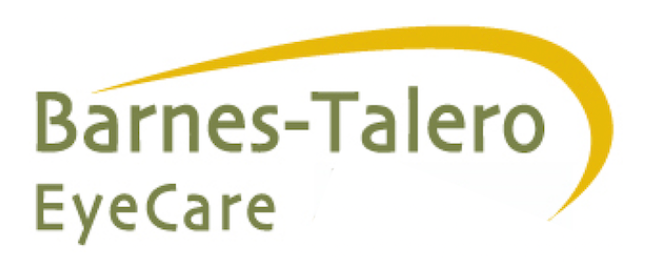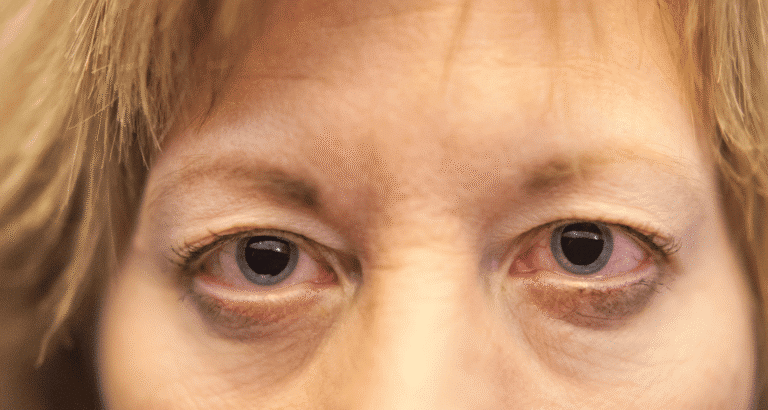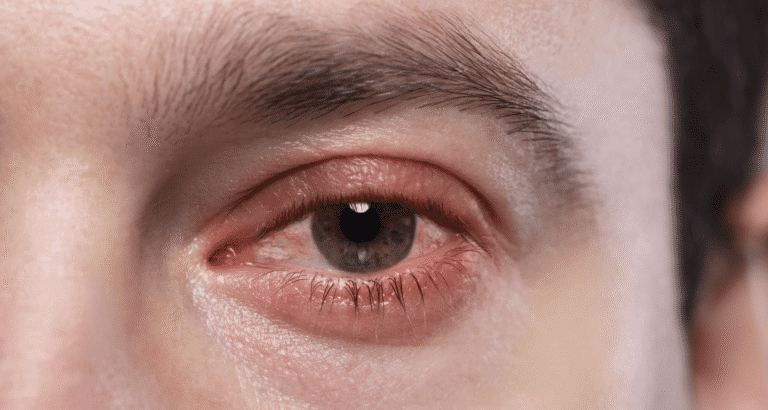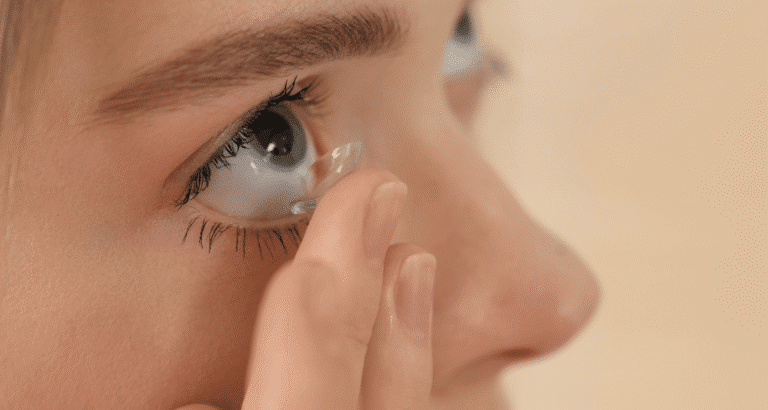One of the most common vision issues for older people is presbyopia. If you find yourself holding a menu farther away at a restaurant or having trouble reading text on your phone, you may also already be experiencing its effects. How do you correct presbyopia? The good news is that there are many highly effective treatments, from glasses and contact lenses to cutting-edge surgical procedures. Here, we’ll examine the causes, symptoms, and treatments that can restore clarity of focus for close-up tasks associated with presbyopia.
What is Presbyopia?
Presbyopia is a vision condition related to aging, typically beginning in individuals around 40 years old or older. Unlike nearsightedness or farsightedness, which are due to the distortion of the eyeball itself, presbyopia occurs because the eye’s crystalline lens stiffens with age.
When we are young, the lens is flexible enough that our eyes can accommodate and readily focus on objects that range from far to near. As you age, the lens becomes less elastic, and the muscles that adjust it weaken, making close-up tasks more challenging to focus. This is why many people who’ve never worn glasses suddenly need reading glasses for presbyopia.
Presbyopia Symptoms
Presbyopia occurs slowly, and the patient may not be aware of it initially. Many people don’t even notice they’re having trouble seeing until everyday tasks start to become more annoying. As the condition progresses gradually, it’s easy to compensate without realizing it, by holding your phone further, say, or squinting more in brighter light. Identifying those signs early can lead to a good treatment plan and prevent needless eye strain.
- Difficulty reading small print, especially in dim light
- Holding reading material farther away to see it clearly
- Eyestrain or headaches after reading or computer work
- Needing brighter lighting for close-up tasks
- Blurred vision when transitioning between near and far objects
If you notice these signs, it’s time to schedule an appointment with your eye doctor; untreated presbyopia can lead to eye strain and a decreased quality of life.
Presbyopia Causes
Presbyopia is a consequence of aging. The lens in the eye stiffens, and the surrounding muscles lose flexibility, making it harder to focus on nearby objects. Although age is a natural cause, certain lifestyle factors, such as staring at screens for too long or poor lighting, or even something as simple as chronic eye strain, can exacerbate symptoms before you’re due.
Presbyopia Treatment Options
The great news is that there are many ways to correct presbyopia, and the choice you make will depend on your vision needs, lifestyle, and personal preference. These are the most popular and effective treatments:
1. Reading Glasses for Presbyopia
The most common and easiest is reading glasses. These are OTC glasses with different strengths, also known as “readers.” They’re great for people who don’t need distance correction but have near vision problems.
- Pros: Inexpensive, available everywhere, simple to use
- Cons: Assists only with near vision; you might have to lug them everywhere
2. Bifocal or Progressive Lenses
If you already wear glasses for distance, consider bifocal lenses or progressive lenses, as they can provide near and far correction in a single pair of glasses. Rather than constantly swapping out between multiple pairs, one for reading and one for driving, these combine different corrections.
- Bifocal Glasses for Presbyopia: These lenses feature two separate areas for distance and near vision. The dividing line is visible.
- Progressive lenses for Presbyopia: These lens types ensure a smooth switch between distance, intermediate, and near vision without any visible lines.
Pros: Convenient, no more carrying multiple pairs of glasses
Cons: It may take some time to get used to; progressives can be costly
3. Contact Lenses for Presbyopia
If you prefer not to wear glasses, presbyopia contact lenses are also a practical option. These lenses are created to correct near, intermediate, and distance vision, freeing you from the dependence on bifocals or multifocals. They are an excellent choice for individuals with an active lifestyle who dislike the appearance of glasses or desire greater visual freedom. Two principal methods are available to correct presbyopia by means of contact lenses:
- Multifocal Lenses for Presbyopia: Certain prescription glasses can accommodate different areas that meet the criteria for distant, intermediate, and/or near vision.
- Monovision and Presbyopia: One eye is fitted with a contact lens for near vision, while the other is equipped with a contact lens for distance vision. The brain compensates to fuse the images.
Pros: Freedom from glasses, natural appearance
Cons: Not everyone adapts well, requires proper fitting and adjustment
4. Presbyopia Eye Drops
Presbyopia eye drops are a tantalizing new development in vision care. These drugs work by temporarily narrowing the pupil size, which increases depth of focus and brings near vision into more precise focus. They typically last for several hours and can reduce the need for reading glasses.
Pros: Non-invasive, easy to do, and improving rapidly with new research.
Cons: Temporarily fixes the problem, can have some mild side effects, such as redness of the eyes
5. Refractive Surgery for Presbyopia
For those who are more serious, surgical solutions are available. This procedure falls under the umbrella of refractive surgery and is designed to reduce or eliminate your dependence on glasses and contact lenses. Advances in technology now allow new presbyopia correcting surgical options that are safe, targeted, and specifically designed to manage the complex issues related to presbyopia. The most common procedures include:
- LASIK for Presbyopia: LASIK usually treats myopia or hyperopia, but it can be tweaked to achieve monovision or blended vision.
- Surgery To Correct Presbyopia: Operations that involve replacing the stiffened natural lens of the eye with a flexible, artificial multifocal lens in refractive exchange (RLE) are performed.
Pros: long-term correction, decreased reliance on glasses or contacts
Cons: surgical risks, costs more than other choices
6. Eye Exercises for Presbyopia
Some people experiment with eye exercises for presbyopia in an attempt to sharpen their focusing ability. They cannot soften the lens. They may offer temporary relief, allowing one to feel more comfortable.
7. Presbyopia Prevention
Because presbyopia is primarily an age-related condition, there’s no surefire way to prevent it. However, adopting the right lifestyle will allow you to postpone it and experience milder forms. Key presbyopia prevention tips include:
- Protecting your eyes from UV damage with sunglasses
- Eating a diet rich in antioxidants (leafy greens, fish, nuts)
- Maintaining proper screen ergonomics and taking frequent breaks
- Managing systemic conditions like diabetes and hypertension
- Scheduling regular eye exams to catch changes early
Making routine appointments to have your eyes examined so that changes can be detected early
Choosing the Right Option to Correct Presbyopia
When choosing the proper treatment for you, consider your visual needs, lifestyle, and personal preferences. Because no single solution is right for everyone, your ideal solution depends on how frequently you require near vision correction, whether you already wear glasses or contact lenses, and your level of comfort with different treatments. Here are some considerations to help you decide:
- Do you read or work on screens frequently? Progressives or multifocal contacts may be the best option for you.
- Do you only need help occasionally? Simple reading glasses could suffice.
- Do you want a more permanent solution? Refractive surgery or lens replacement might be the right choice.
- Do you dislike glasses altogether? Contact lenses or eye drops may offer more freedom.
Your eye doctor can help answer these questions, conduct a comprehensive eye examination, and recommend the best treatment.

Conclusion
Presbyopia is an inevitable consequence of getting older, but you don’t have to let it disrupt your daily routine or quality of life. There are numerous options for correcting presbyopia, including reading glasses, progressive lenses, multifocal contacts, presbyopia surgery, eye drops, and other refractive procedures to suit every lifestyle. You can’t prevent the lens from hardening, but you can completely restore clear near vision with the proper treatment.
If you’ve been wondering “how to fix presbyopia?” the answer is that you have more options than ever. At Barnes Talero Eyecare, we believe in educating patients on their choices. We can help you understand which solution will enable your vision to stay clear, secure, and reliable for many years to come.
FAQs
Can presbyopia be corrected?
Yes, reading glasses, bifocals, and progressive lenses can help alleviate presbyopia, as can contact lenses or surgical alternatives such as LASIK and lens replacement.
Can you correct presbyopia naturally?
No, natural remedies cannot correct presbyopia because it is a result of age-related stiffening in the lens; however, good habits and eye exercises can help reduce exertion.
What is best used to correct presbyopia?
The answer, as always, is: It depends on your lifestyle. For occasional use, consider reading glasses. For daily convenience, opt for progressive lenses or multifocal contacts. If you prefer a more permanent solution, surgery may be the best option.
Can presbyopia be reversed?
No, presbyopia can’t be reversed, but specific treatments can alleviate symptoms and restore clear near vision.





